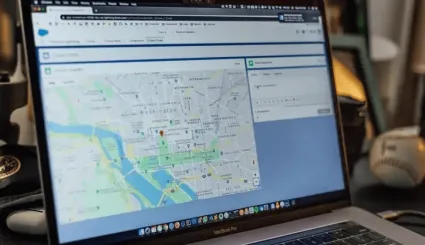Drupal 11 – What Changes Does it Bring?
Drupal 11 has debuted in August 2024. It is a major release that offers many interesting solutions and new possibilities. This article explores the updates in Drupal 11 and guides you on preparing and updating your website.

Drupal 11 Release Cycle – What Should You Know?
Drupal 11 Release Cycle – What Should You Know?
The Drupal 11 release cycle is a process that includes several key phases, i.e., planning, development, testing, release and support. Thanks to its predictability, such a schedule helps manage CMS versions more effectively, facilitating maintenance and planning subsequent system updates.
Based on the current release cycle, the RC and beta versions of Drupal 11.1.0 and 10.4.0 were presented in November 2024, and their final versions were released in December 2024. Please note that security support for version 10.2.x ended in the same month, so it is time to update if you are still using it.
According to the schedule, Drupal 11.2.0-alpha and 10.5.0-alpha1 are set to be released in early May 2025. In the middle of the month, Drupal 11.2.0-beta1 and 10.5.0-beta1 will debut. Additionally, in June, Drupal 11.2.0-rc1 and 10.5.0-rc1 will be released. Moreover, in the middle of June 2025, Drupal 11.2.0 and 10.5.0 will be introduced to the world, while security support for version 10.3.x will officially conclude.
What’s New in Drupal 11?
What’s New in Drupal 11?
The new major version brings a few new functions that aim to improve your website's usability, performance and flexibility. Here are the highlights of Drupal 11:
- Recipes – experimental module in Drupal 11. Each recipe is a predefined set of modules, settings, and configurations that can be applied to a website to achieve a specific function or set of features. You can create your own recipes to share or reuse.
- Taxonomy management improvements – the new user interface in Drupal 11 makes it easier to view, delete and restore different versions of taxonomy terms. This provides control of the history of changes. Additionally, in the latest version of the CMS, you can use the Content Moderation Workflow when moderating the content of taxonomy terms. This means that when working with taxonomy terms, you can set them to different states, such as “draft” or “published”.
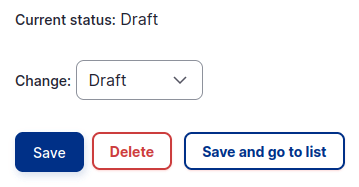
Taxonomy management in Drupal 11
- New, vertical navigation menu – this feature in Drupal 11 core is experimental. It moves the admin interface to the left sidebar, providing a modern look. More improvements to this module are coming soon, including a dynamic topbar. To try this feature, go to the admin skin settings (admin/appearance/settings) and select New Drupal Navigation.
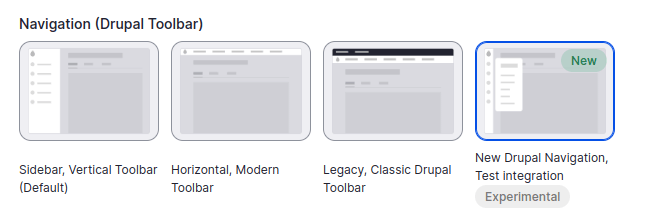
Drupal 11’s new vertical navigation menu
- Single Directory Components – another new function you may come across in Drupal 11. It is included in the stable version of Drupal core. Using this module, you can define components within one catalogue containing all connected files, such as JavaScript, HTML, CSS, or YAML. It simplifies updating and debugging because all the elements will be grouped together, minimising the risk of unexpected errors.
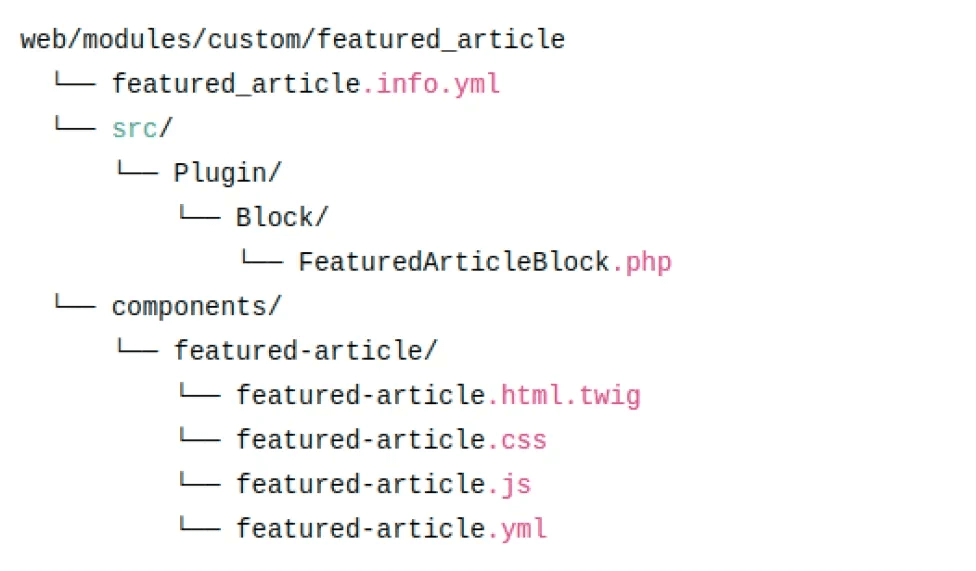
To create a module in Drupal 11 with SDC, you must put all files in a single directory
- Stable version of the Workspaces module – a module used to manage and create workspaces for different stages of content. Now available in a stable version. What does it improve? First of all, you can count on better compatibility, security and performance compared to the experimental version.

Drupal 11 – Workspaces
- More flexible access settings – the new API Access Policy offers more granular control over access permissions. It expands how they are managed beyond traditional roles and permissions. Previously, a user with a role assigned would automatically receive all the associated permissions. Drupal now allows for more precise access management in various contexts.
- Removed admin pages – several admin pages related to manually adding new modules and themes have been removed. The changes result from transitioning to more modern and secure code management methods. This highlights the necessity of using Composer as the sole recommended method for installing modules and themes.

Composer is the only recommended method of installing modules and themes
Drupal 11.1 will introduce innovations such as Automatic Updates, Recipes, and Project Browser. Additionally, this version will introduce the first version of a crucial module – Experience Builder.
Drupal 11 vs. Drupal 10 – Differences
Drupal 11 vs. Drupal 10 – Differences
Drupal 11 offers many significant changes compared to the previous version. To understand the full context and differences between the two versions, it is worth examining the capabilities that Drupal 10 offers.
- Drupal core – some of the modules have been removed. This is to reduce Drupal 10’s core and make it easier to maintain. If you are still using these modules, don’t worry. You can still install and use them. The modules that have been moved are Actions UI, Book, Tracker, Forum, Statistics, and Tour.
- Requirements – Drupal 11, unlike D10, requires PHP 8.3, which means older versions are no longer supported, and Composer 2.7.0 or later. Database requirements have also changed: minimum versions are MySQL 8.0, MariaDB 10.6, PostgreSQL 16, and SQLite 3.45 with the json1 extension.
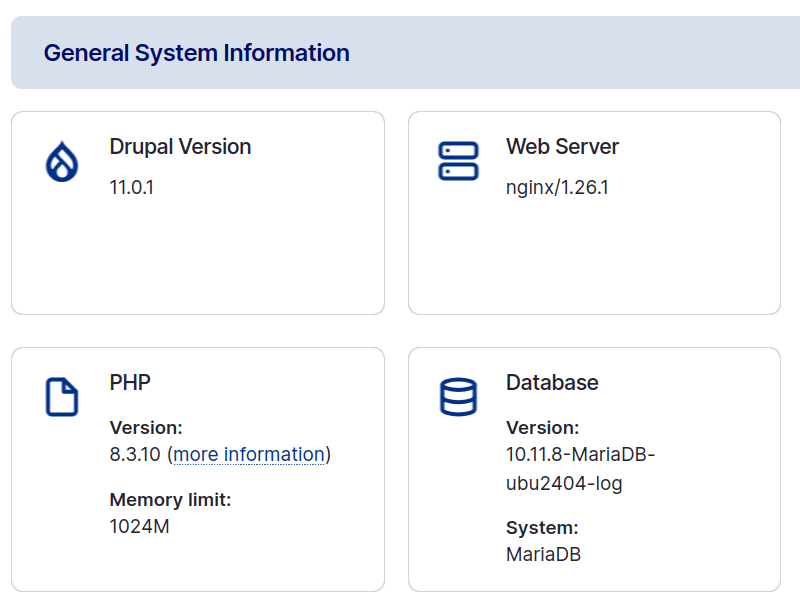
Drupal 11 – requirements
- jQuery4 and jQuery UI – Drupal 10 uses stable jQuery and jQuery UI, which are becoming outdated compared to newer solutions. That’s why Drupal 11 updates jQuery to version 4.0.0 and jQuery UI to 1.14.0. This allows for improvements and bug fixes.
- Deprecated dependencies – Drupal 11 does not include several libraries, such as Shepherd.js, used by the Tour module. This may require updating or migrating existing modules and themes.
- Newer Symfony version – Drupal 11 uses Symfony 7, not 6 like D10. Version 7 brings performance improvements and new features that support modern programming standards.
- Updated CKEditor 5 – Drupal 11 uses CKEditor 5 v42.0.2.
Upgrading to Drupal 11 – How to Prepare?
Upgrading to Drupal 11 – How to Prepare?
Preparing your website for Drupal 11 involves proper planning and a systematic approach. If it is based on Drupal 10, the process will be quite simple, and the upgrade will not be urgent. However, migration is recommended for earlier versions and should be done as soon as possible to avoid potential security issues.
Drupal 7
Upgrading from Drupal 7 to 11 should be done in stages. First, migrate to version 9, then to 10, and only then to Drupal 11. If you still use Drupal 7, schedule an upgrade as soon as possible. Support for this version officially ended on January 5, 2025.
Drupal 9
Drupal 9 support ended in November 2023. Thus, migrating to the latest CMS version is essential for your website's functioning. Although it still works, it is more susceptible to security threats. When migrating, ensure your website runs on the latest version (9.5). Then migrate to Drupal 10 – the basis for the later upgrade to Drupal 11.
Drupal 10
If you are using this version, you are in a good position. Drupal 10 will be supported until 2026, when Drupal 12 is released. You may postpone the version change; the migration should not cause significant issues. It is much easier than older versions because Drupal 11 is a continuation of D10.
When starting the update, first update Drupal to the latest version 10.3.0. Then, update to Drupal 11. You can do this manually in just a few clicks or by using Composer. Ensure all contributed modules and themes you use are compatible with Drupal 11. For this purpose, you can use, for example, the Upgrade Status module.
If you encounter difficulties migrating to the system’s newer version, please contact Drupal website maintenance and support services.
Summary
Summary
The latest Drupal version presents new, interesting solutions. It continues to strengthen CMS’s position as one of the key content management systems on the market. Drupal 11 offers new advanced functionalities and tries to keep up with the ever-growing user requirements. It is not just another version but a key step showing the future and further development direction. It is a combination of modernity with a solid, durable foundation, thanks to which Drupal users will be able to create advanced and secure web applications.

